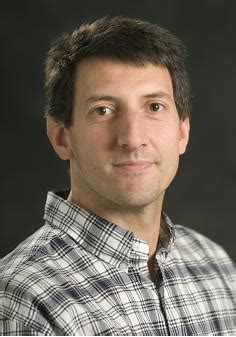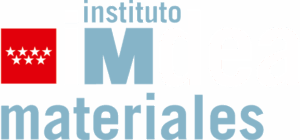«Material scientists are always trying to push the envelop to develop that one material with that one microstructure that can be used for a variety of applications, and along the way materials development occurs and we find certain materials and microstructures that can be used for certain applications.»

After graduating from high school, Carl Boehlert received his B.S. from Cornell, his M.S. from the University of Dayton and his Ph.D. from the University of Dayton (1997).
Carl Boehlert’s research in the field of materials science has earned him numerous honors and awards, including a 2004 Presidential Early Career Award for Scientists and Engineers (PECASE), an award honoring USA’s most promising young researchers. As assistant professor of materials and science at Michigan State University, his current research, involves structural alloys and grain boundary engineering.
Prof. Boehlert has a long history of collaborations with research institutions from Madrid, such as the UPM and IMDEA Materials: in 2014, he led the Summer Engineering in Madrid program, through which eleven MSU undergraduate students did research in the Universidad Politécnica de Madrid and the IMDEA Materials Institute, and he has also hosted secondments of IMDEA Materials’s PhD Students since then.
Starting this interview, can you tell us a little bit about your trajectory and how did your passion for science begin?
The truth is that I could not find a job after I graduated from college so I decided to go to graduate school. It turned out to be a great decision for me. I started working on titanium alloys and titanium matrix composites at the University of Dayton and at Wright Patterson Air Force Base during my Master’s studies and I have continued to study titanium alloys ever since. This interests me and I try to garner the same interest in the students I advise and this keeps me going.
What are the main challenges that scientists are trying to give answer to nowadays in your field?
My dissertation advisor, Dr. Daniel Eylon, used to say, there is no “free lunch”, which means when you have a material that exhibits one good property, there is usually another property that is not so good. The example is that when you process a metal to obtain high strength, it usually suffers from low fracture toughness or elongation-to-failure. I think the main challenges that materials scientists face is trying to process materials that contain microstructures that exhibit as many beneficial properties as possible for targeted applications. Material scientists are always trying to push the envelop to develop that one material with that one microstructure that can be used for a variety of applications, and along the way materials development occurs and we find certain materials and microstructures that can be used for certain applications.
You have been collaborating with IMDEA Materials for quite some time already (given the lifespan of the Institute). How did it start and how do you see from the outside the evolution of the Institute from its beginnings to what it is now that it has been awarded with the Maria de Maetzu Seal of Excellence?
I first met Javier Llorca when I was working at Wright Patterson Air Force Base. I contacted him around 2008 to see if we could have a collaboration and he suggested that we right a proposal to work together. He knew of a proposal that we could submit that would allow me to take a sabbatical year and work with him in Madrid. The proposal was successful and I was able to work with him on TiAl intermetallic alloys from August 2010 through August 2011. It was a great experience and I saw the roots of IMDEA at the Complutense Campus where it started with very few workers. Wow has it grown since. I have had the privilege of collaborating with Javier ever since along with several members of the IMDEA Materials. I try to visit IMDEA Materials at least once every year and there have been several faculty from the College of Engineering at Michigan State University who have collaborated with IMDEA Materials as well in recent years. IMDEA Materials has now grown to be a wonderful materials institute with excellent researchers and facilities and equipment. I am currently collaborating with IMDEA on a program and we have submitted a proposal to continue this collaboration for years into the future. I happily attended the celebration party at IMDEA Materials for the Maria de Maetzu Seal of Excellence Award in July 2019. The growth of IMDEA from a handful of people in the first decade of 2000 to well over 100 employees now has been great to see. I am very proud t be associated with IMDEA Materials.
Very often, successful scientists have a critical point in their careers, normally during their post-doc period, and marked by finding a different research topic, a different way of working, etc., that mark their careers. Did something like this happen to you?
One of the critical points in my career was when I worked at IMDEA Materials from August 2010-August 2011. I was an associate professor and I was working toward securing research funding to progress towards being promoted to a full professor and I was struggling to do that. During that period, we wrote a collaborative proposal that was submitted to the National Science Foundation (NSF) Materials World Network program that required a joint review from NSF and the Spanish NSF equivalent. It was successful and allowed for a fruitful collaboration between myself and IMDEA Materials from 2011 through 2015. I would not have been promoted to full professor in 2015 without that collaboration.
As mentor of younger researchers, which are the qualities you value the most in new students that start working with you?
I have had to answer that question before and here is my answer: The quality I value the most in new students is honesty. I appreciate it when students tell me the truth and are straight forward. When students tell me when they are struggling and when they are not and what they are most interested in and what they are least interested in, I appreciate it and enjoy working with them to solve problems.
This interview will be read by IMDEA Materials’ alumni, but also from people that is currently working in our center. What career advice can you give to PhD students or early post-docs?
First, I would tell them that they are working at a great place and they should take advantage of that by learning as much as they can and from as many people as they can there. I would advise them to work hard but at the same time it is important to maintain a balance in their life: faith, family, and friends are important among other things, including work, and it is important to find a balance to live a happy life.

